The evolution of Shang Tsung and Reptile
19 years of shapeshifting and face-changing from Mortal Kombat's resident wizard and lizard
Mortal Kombat II (1993)
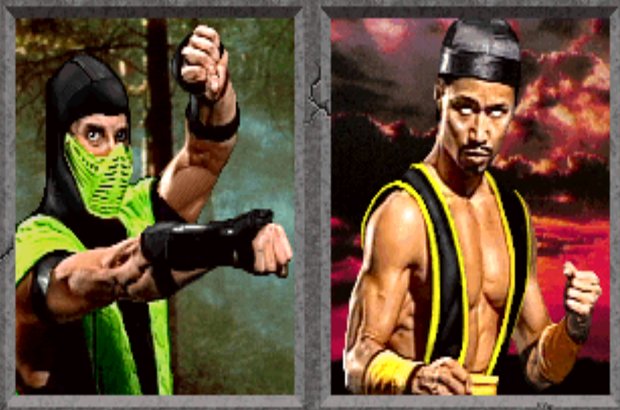
Mortal Kombat’s first sequel brought a whole bunch of big improvements to the table, not the least of which was the inclusion of Shang Tsung and Reptile as playable characters. Finally, two of the series’ biggest badasses could be used to wreak havoc against your friends, and you didn’t even need a code to unlock them.
Shang Tsung was obviously the biggest surprise, since everyone sort of assumed he’d died at the end of the first game. Played by martial artist/MD Dr. Philip Ahn, Tsung was now much younger than his first incarnation (thanks to Shao Kahn not only sparing his life, but giving him a new body), and he’d traded in his bathrobe for some comparatively sleek baggy pants, a couple of sash-suspenders and a skullcap. More importantly, he hadn’t lost any of his abilities from the first game, meaning that – if you could memorize his extensive movelist – it was possible to turn into, and play as, any character in the game for a few seconds at a time.

Above: Like Mileena, say
In retrospect, this was kind of a cheesy thing to put into the game, since it allowed players who were extremely good with a couple of characters to switch between them mid-match and annihilate their opponents. But we sure as hell didn’t care at the time, because having instant access to every move in the game was incredibly cool. Especially when you considered that those moves also included Fatalities.
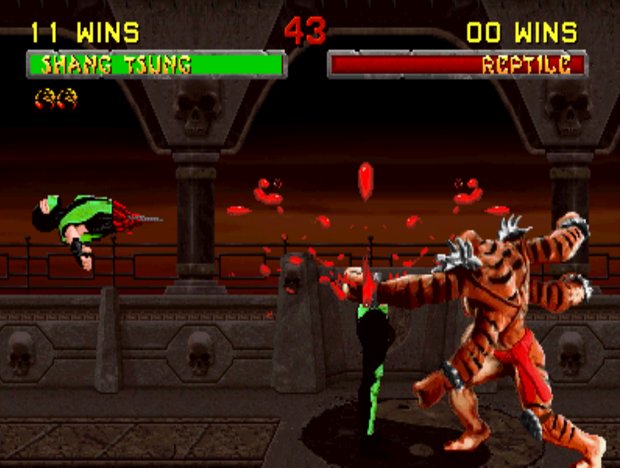
Above: Sadly, Tsung could only transform into Kintaro during this specific Fatality
With the ability to transform as his greatest asset, nobody really wanted to play as Shang Tsung, the sorcerer, for very long – although when they did, they could at least do some damage with his multiple skull-fireballs.
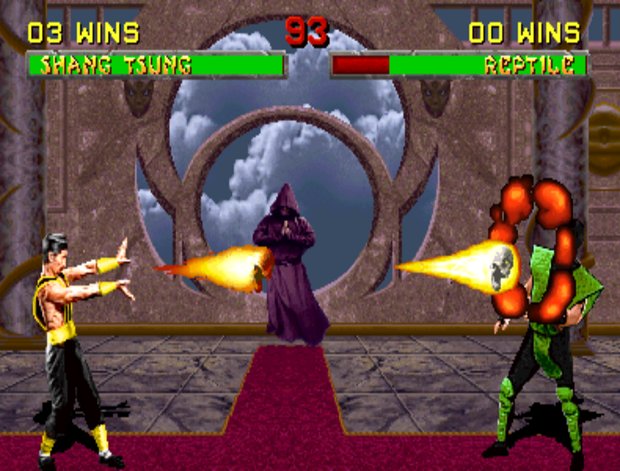
While Tsung got a youthful new appearance, Reptile got nothing less than a complete overhaul. Sure, he was still a palette-swapped ninja, played once again by Daniel Pesina and wearing the same butchered paintball mask as Scorpion and Sub-Zero. But this time he was more than just a combination of the two. For starters, while he looked human most of the time, MKII made it clear that there was, in fact, something lizardlike underneath his mask. Mostly when he lifted it to spit acid across the screen.
Weekly digests, tales from the communities you love, and more
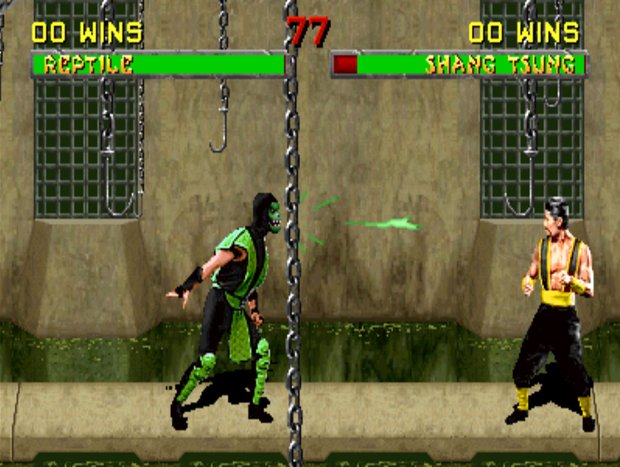
No longer a superpowered human, Reptile was now the silent protector of Shang Tsung and the last (or one of the last) of a reptilian race called the Saurians. While loyal to Tsung and Shao Kahn, his primary goal was to bring his species back from near-extinction – and when Kahn threatened that, his ending reveals, he sprung into action.
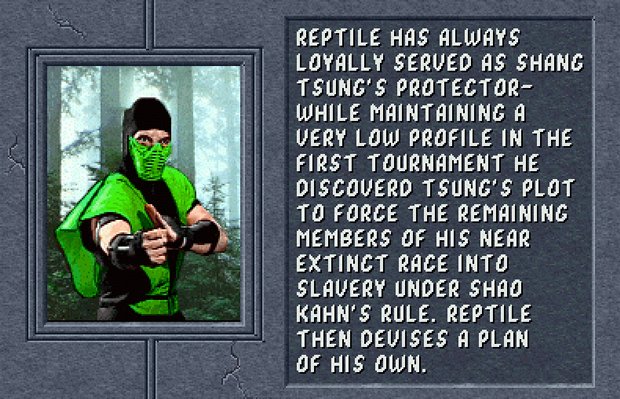
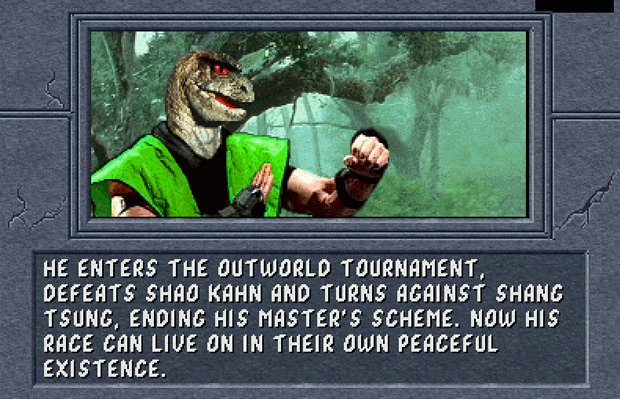
Aside from spitting acid and being vaguely lizardy, Reptile could now create pulsating orbs that could knock his opponents forward (and into his waiting uppercut)…
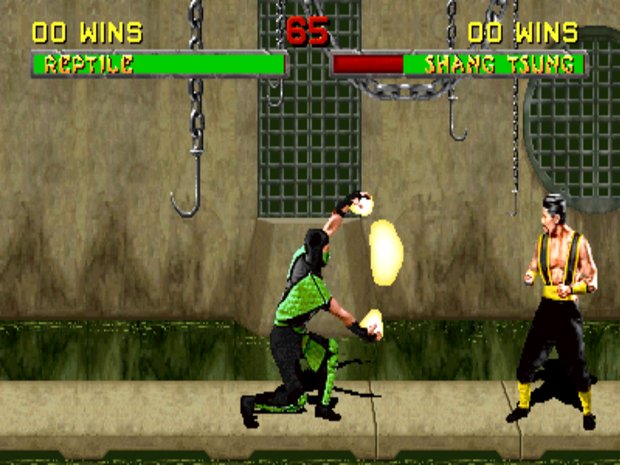
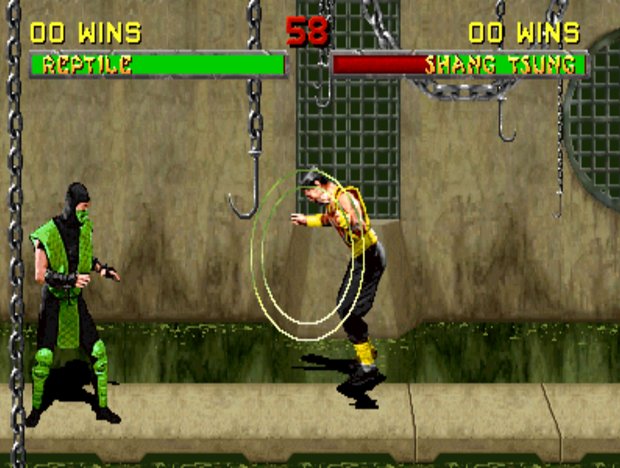
… and in keeping with his mysterious, hard-to-find nature, he could turn himself invisible in a puff of smoke.
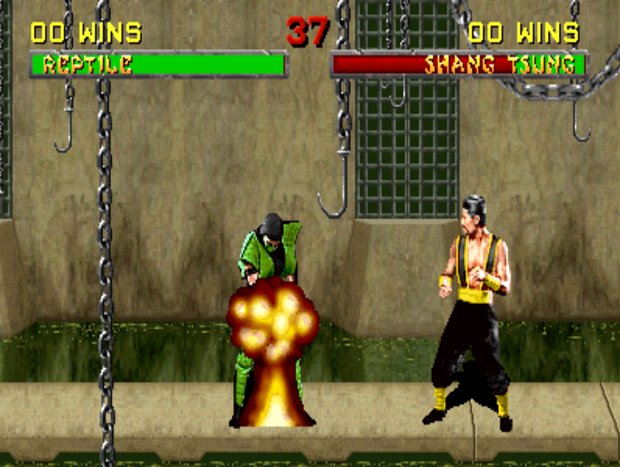
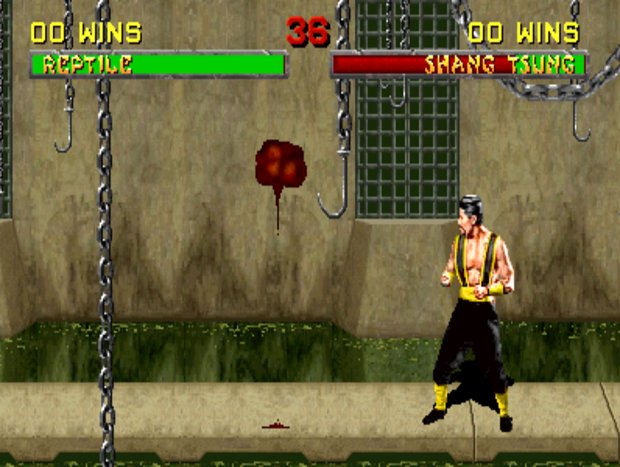
He did retain one move stolen from Sub-Zero, however – the ice slide, which was just as effective at tripping up opponents in Reptile’s hands.

While both Reptile and Tsung had stolen Fatalities from other characters at some point, the developers weren’t content to stop there. Instead, each of the villains got at least two original ways to kill their opponents, most of which were pretty nasty-looking.
Just because they were evil, however, they didn’t always have to finish their fights by killing their opponents. Thanks to Mortal Kombat II’s new, nonviolent finishers, they could turn each other into pixellated babies…
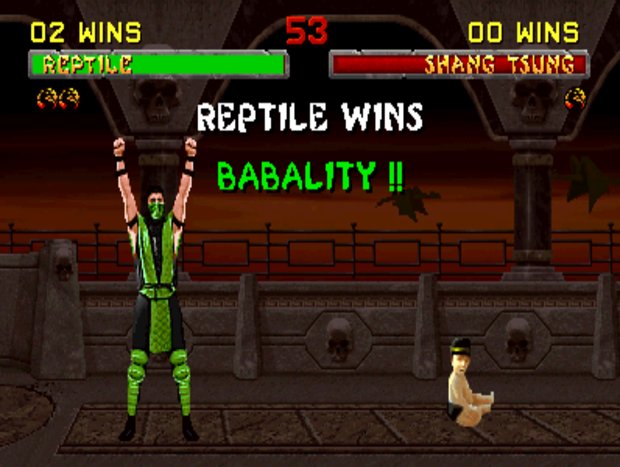
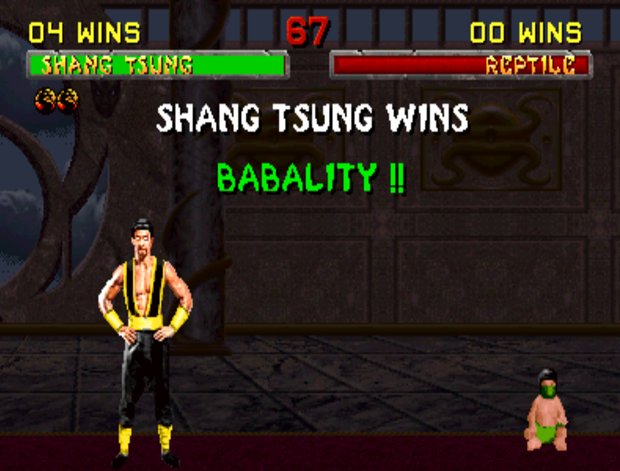
… or make friendly gestures that were a little more appropriate to their employee-boss relationship.
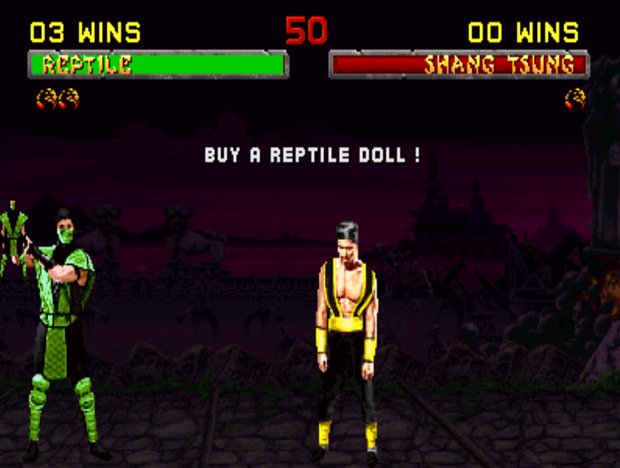
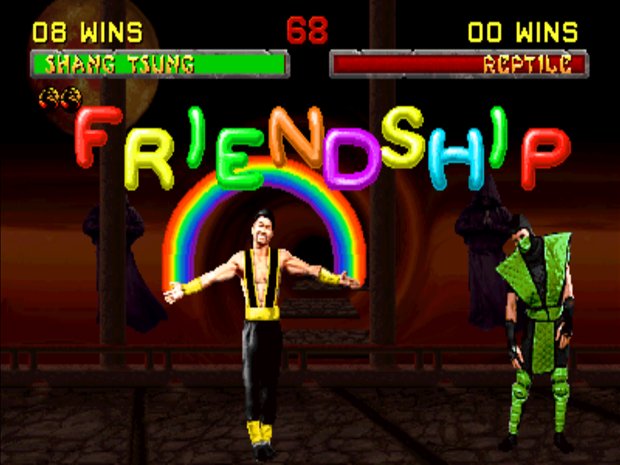
As silly as those were, though, they were nothing compared to what lay ahead.
Mortal Kombat 3/Ultimate Mortal Kombat 3/Mortal Kombat Trilogy (1995/1996)
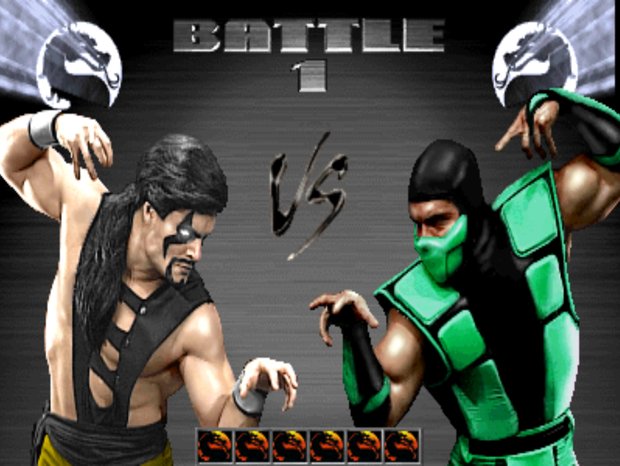
Like Sub-Zero, Shang Tsung underwent a dramatic race change when Mortal Kombat 3 rolled around – and like Sub-Zero, he was also played by Hank Rollins-esque actor John Turk, this time in gothy facepaint to disguise the facial similarities. He also wore a much goofier, more revealing outfit than before, which fit in well with MK3’s weird “spandex and muscles” visual theme, but made it awfully damn hard to take him seriously as a villain. Suddenly his old bathrobe didn’t seem so lame after all.
In any case, he had the moves to back up his villainous reputation, this time bringing not only an uglier version of his old skull-fireballs…

… but also the ability to summon waves of them up out of the ground – which, if timed right, could juggle your opponent with a three-hit combo.
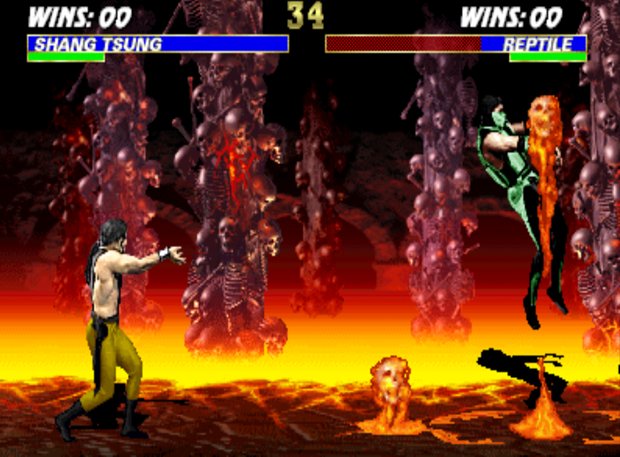
And, of course, he retained the ability to transform into every other character, which made his silly new appearance a little easier to ignore.
Meanwhile, Reptile – like the rest of the non-cyber, non-Sub Zero ninjas – was totally AWOL from the first version of MK3, and didn’t appear until the advent of Ultimate MK3 a few months later. When he finally did, though, he had the distinction of being the only MK character to spurt green blood in an uncensored game.
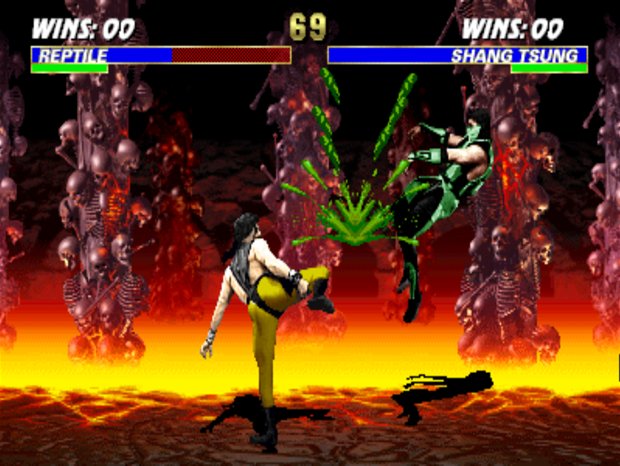
He also kept all his old moves when he reappeared. Invisibility, acid spitting – it was all there, albeit with some minor cosmetic differences, like the color of this force ball:

He also had one new move: the ability to run behind his opponent and deliver a sharp elbow to the back of his or her head, which sent them flying.
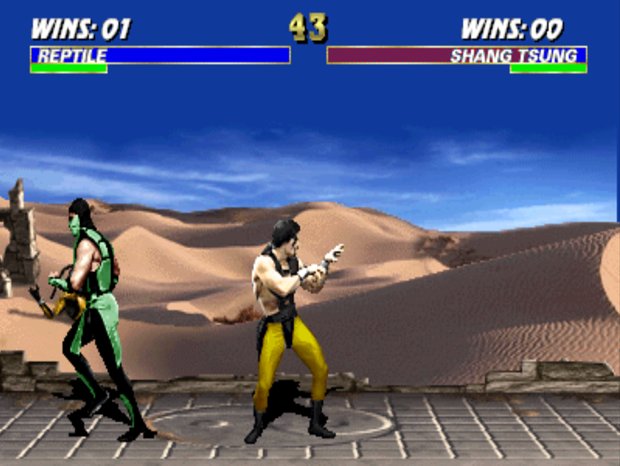
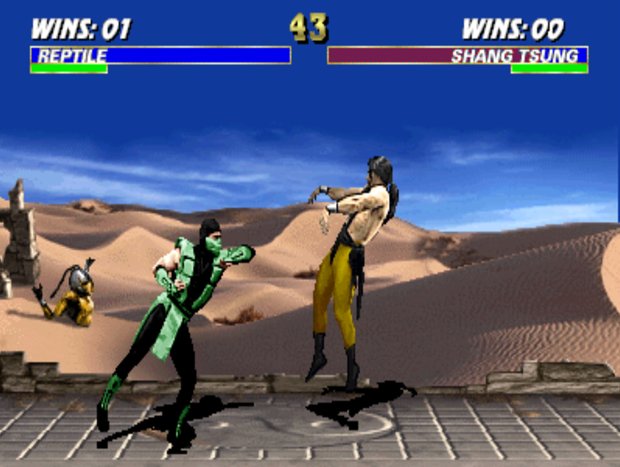
Once again on a mad quest to resurrect his race, Reptile’s Saurian appearance showed through a little more in UMK3, mostly during his Fatalities – of which both he and Shang Tsung, like every other character in MK3, had more than enough to go around.
At this point, you might think the vile sorcerer and his pet lizard had a bright future ahead of them. Unfortunately, their next appearance is where things started to go off the rails for the duo.



